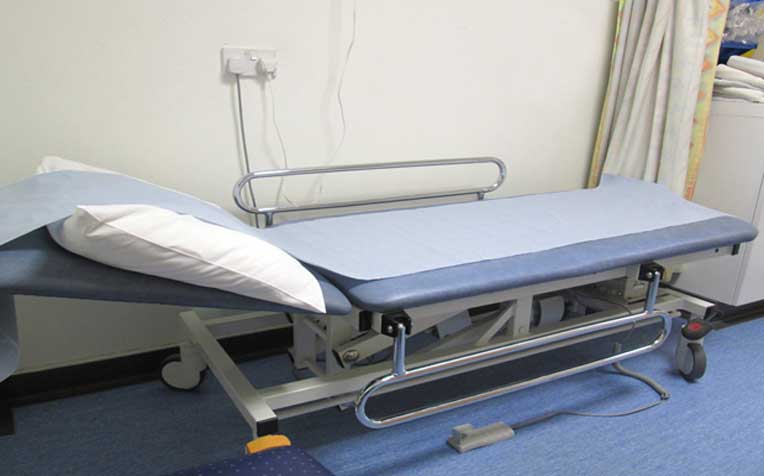
An adjustable bed can help patients recovering from an operation to get better rest.
The Department of Physiotherapy at Singapore General Hospital, a member of the SingHealth group, shares some benefits of adjustable beds.
An adjustable bed can help people with injuries or those recovering from surgery have a good night’s sleep.
If you wake up feeling tired, you may not have had a good night’s sleep.Here are some reasons why you can sleep better in an adjustable bed.
Can an adjustable bed improve the quality of sleep, especially for individuals suffering from sleep or breathing disorders, such as obstructive sleep apnoea, insomnia and acid reflux?
From the perspective of physiotherapy, an adjustable bed can help individuals with certain respiratory disorders. With the help of a therapist, the patient can lie in positions that facilitate better breathing, such as one that elevates the upper body. Being able to breathe more easily allows the patient to sleep better and feel more rested.
How can an adjustable bed help caregivers?
An adjustable bed doesn’t just benefit patients, it also helps their caregivers. For instance, by adjusting the height, the head and leg rests of the bed, the patient will be able to get in and out of it easily, requiring less assistance from his caregiver. At the same time, the caregiver avoids excessive bending – which can strain his back – to help the patient get in and out of bed.
Why is an adjustable bed that offers different positions – headrest, leg rest and height adjustment – better than a regular flat bed?
An adjustable bed allows a patient suffering from a musculoskeletal condition to sleep in the position that is most comfortable, so he avoids putting pressure on injured or painful joints and/or muscles. This is particularly useful when the injury takes a long time to recover, or if it is chronic in nature.
For a patient with a knee injury or stiff knee, the bed can be adjusted to allow him to sleep with the knee bent. Meanwhile, for patients with back pain, the elderly or those weakened by illness or who have limited joint movement and strength, the bed can be adjusted to a suitable height to make getting in and out of bed easier.
How does an adjustable bed help women who are pregnant and those who have delivered?
Many pregnant women find it more comfortable to sleep or rest with their legs elevated to reduce swelling in their feet. At the same time, this provides a comfortable position for their lower back.
Breastfeeding in bed is also more comfortable if the head and leg rests can be adjusted to prevent strain to the neck and back.
How does an adjustable bed help a patient recover better after an operation, such as hip or knee replacement surgery?
Allowing the leg, swollen after joint replacement surgery, to rest in a raised position in bed helps reduce swelling and promote healing. Resting the stiff and painful joint at a proper height, which is possible with an adjustable bed, is not just more comfortable, it also eases the difficulty of getting in and out of bed at a time when the leg muscles are weak.
Some procedures may require prolonged bed rest, and patients can develop backache from lying or sitting in bed for too long. A bed that allows adjustment for different sleeping positions can ease some of these problems. Being able to adjust the height and position of the bed to allow a patient to get in and out of it more easily also encourages him to leave his bed more often, which can help to avoid certain problems associated with prolonged bed rest.
What is the difference between a firm mattress and a soft one in an adjustable bed?
As with regular beds, a supportive mattress is more comfortable as it allows for better posture during sleep. The top layer of the mattress can be softer, but a good mattress should provide adequate support to prevent the heavier parts of the body, like the pelvis, from sinking deep into the mattress. This is particularly important in an adjustable bed, as adjustments to the bed lead to a distribution of body weight to different parts of the mattress. For example, when the leg rest is raised, greater weight is transferred to the buttock and pelvis region. If the mattress is too soft, the pelvis tends to sink too deep into the bed, causing discomfort to the lower back.
Ref: T12
Contributed by


















 Get it on Google Play
Get it on Google Play